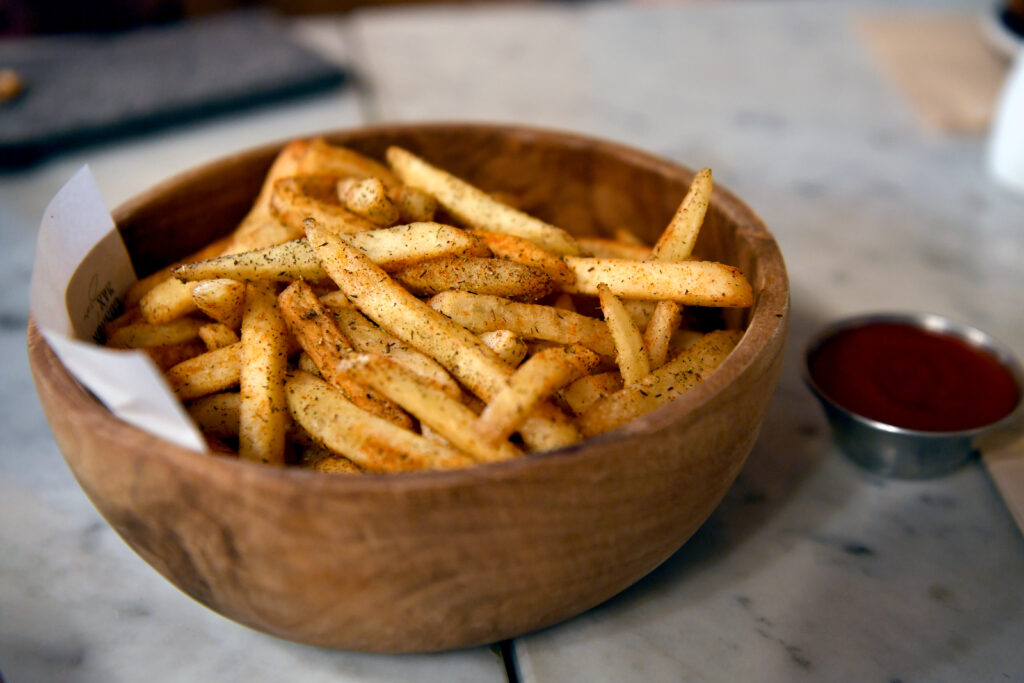In a timely and informative article, CNN provides readers with essential tips on how to prevent food poisoning. Drawing on the expertise of a doctor, the article highlights key preventive measures that individuals can take to safeguard their health when it comes to consuming food. With foodborne illnesses becoming a growing concern in recent years, this article aims to equip readers with the knowledge needed to protect themselves and their loved ones from potential risks associated with contaminated food. By following the expert advice presented, individuals can reduce their chances of falling victim to food poisoning and enjoy a worry-free dining experience.

Symptoms of Food Poisoning
Food poisoning is a common ailment that affects millions of people worldwide each year. It is caused by the consumption of contaminated food or water, and can result in a range of symptoms. The severity and duration of these symptoms vary depending on the individual and the specific type of bacteria or toxin involved. Some common symptoms of food poisoning include:
-
Nausea and Vomiting: One of the most common symptoms of food poisoning is nausea, often accompanied by vomiting. This occurs as the body’s natural response to expel the harmful substances ingested.
-
Diarrhea: Diarrhea is another frequent symptom of food poisoning. It is characterized by loose or watery stools, and can be accompanied by abdominal cramps.
-
Abdominal Pain: Many individuals with food poisoning experience abdominal pain or discomfort. This pain may range from mild to severe, and can be localized or spread throughout the abdomen.
-
Fever: In some cases, food poisoning may lead to a fever. This is often an indication that the body is trying to fight off the infection.
-
Fatigue: Feeling tired or weak is a common symptom of food poisoning. This can be due to the body’s immune response or loss of fluids through diarrhea and vomiting.
-
Headache: Some individuals may experience headaches as a result of food poisoning. This can be caused by dehydration or the toxins produced by bacteria.
-
Muscle aches: Muscle aches are another possible symptom of food poisoning, as the body’s immune system reacts to the harmful substances ingested.
It is important to note that these symptoms may not appear immediately after consuming contaminated food. The onset of symptoms can vary from a few hours to several days, depending on the specific bacteria or toxin involved.
Common Causes of Food Poisoning
There are several common causes of food poisoning, which include:
-
Bacterial Infections: Bacteria such as Salmonella, Escherichia coli (E. coli), Campylobacter, and Listeria monocytogenes are commonly associated with food poisoning. These bacteria can contaminate food during the production, processing, or handling stages.
-
Viral Infections: Viruses such as norovirus and hepatitis A can cause food poisoning. These viruses are highly contagious and can be spread through contaminated food or water.
-
Parasitic Infections: Parasites such as Giardia and Cryptosporidium can cause food poisoning. These parasites are often found in contaminated water sources or can be transmitted through improper handling of food.
-
Toxins: Toxins produced by bacteria such as Staphylococcus aureus and Clostridium botulinum can cause food poisoning. These toxins can be present in improperly stored or processed food.
-
Chemical Contaminants: Chemical substances such as pesticides, heavy metals, and cleaning agents can contaminate food and cause food poisoning if ingested.

1. Proper Food Handling Techniques
Proper food handling techniques play a crucial role in preventing food poisoning. It is important to follow these guidelines to minimize the risk of contamination:
-
Wash Hands: Before handling food, always wash hands thoroughly with soap and water for at least 20 seconds. This helps to remove any potential bacteria or viruses.
-
Separate Raw and Cooked Food: Keep raw meat, poultry, seafood, and eggs separate from ready-to-eat food to prevent cross-contamination.
-
Cook Food to Safe Temperatures: Use a food thermometer to ensure that food is cooked to the appropriate temperature to kill bacteria and other pathogens.
-
Store Food at Proper Temperatures: Refrigerate perishable foods promptly and maintain a temperature of 40°F (4°C) or below. Frozen foods should be kept at 0°F (-18°C) or below.
-
Avoid Using Expired Food: Check the expiration dates on food products and discard any that have expired.
-
Clean and Sanitize Surfaces: Clean and sanitize countertops, cutting boards, and utensils regularly to prevent the growth and spread of bacteria.
-
Avoid Cross-Contamination: Use separate cutting boards and utensils for raw meat, poultry, and seafood to avoid cross-contamination with other foods.
-
Wash Fruits and Vegetables: Rinse fruits and vegetables under running water before consumption to remove any dirt or bacteria.
-
Use Safe Water Sources: Ensure that the water used for drinking and cooking is from a safe and reliable source.
2. Safe Food Storage
Proper food storage is essential to prevent the growth of bacteria and other pathogens that can cause food poisoning. Follow these guidelines to ensure safe food storage:
-
Refrigerate Perishable Foods: Perishable foods such as meat, poultry, seafood, dairy products, and cooked leftovers should be promptly refrigerated at 40°F (4°C) or below.
-
Use Within Recommended Timeframes: Check the storage guidelines on food packaging and consume the product within the recommended timeframe. Discard any perishable food that has been left at room temperature for longer than two hours.
-
Store Raw Meat Separately: Keep raw meat, poultry, and seafood wrapped securely and stored in the bottom of the refrigerator to prevent any drips from contaminating other foods.
-
Use Airtight Containers: Store food in airtight containers or wrap it tightly to prevent the entry of bacteria or other contaminants.
-
Rotate Food: Use the principle of “first in, first out” to ensure that older food items are consumed first. This helps to prevent the consumption of expired or spoiled food.

3. Cook Food Thoroughly
Cooking food thoroughly is vital to eliminate bacteria and other pathogens that may be present. Follow these guidelines to ensure that food is cooked to a safe internal temperature:
-
Use a Food Thermometer: Invest in a reliable food thermometer to accurately measure the internal temperature of cooked food.
-
Cook Ground Meat and Poultry to 165°F (74°C): Ground meat and poultry, such as hamburgers and sausages, should be cooked to a minimum internal temperature of 165°F (74°C) to kill any bacteria present.
-
Cook Whole Cuts of Meat to the Appropriate Temperature: Different types of meat require different internal temperatures to be considered safe. For example, cook poultry (including chicken and turkey) to a minimum internal temperature of 165°F (74°C), while pork and beef can be cooked to 145°F (63°C).
-
Cook Fish to 145°F (63°C): Fish should be cooked to an internal temperature of 145°F (63°C) to ensure that any harmful bacteria or parasites are eliminated.
-
Reheat Leftovers to 165°F (74°C): When reheating leftovers, ensure that they reach a minimum internal temperature of 165°F (74°C) to eliminate any bacteria that may have grown during storage.
4. Use Clean Utensils and Surfaces
Using clean utensils and surfaces is crucial in preventing cross-contamination and the spread of bacteria. Follow these guidelines to ensure that utensils and surfaces are clean:
-
Wash Utensils Thoroughly: After each use, wash utensils, such as knives, spoons, and forks, with hot, soapy water. Rinse them well before using them again.
-
Clean Cutting Boards: Scrub cutting boards with hot, soapy water after each use. If possible, use separate cutting boards for different types of food to prevent cross-contamination.
-
Sanitize Surfaces: Sanitize countertops, sinks, and other surfaces regularly with a diluted bleach solution or a commercial sanitizing agent.
-
Use Paper Towels or Disposable Wipes: Use disposable paper towels or wipes to clean surfaces and utensils, and discard them after use to prevent the spread of bacteria.
-
Avoid Using Sponges: Sponges can harbor bacteria and should be avoided when cleaning utensils and surfaces.
5. Beware of Cross-Contamination
Cross-contamination occurs when bacteria from one food item are transferred to another, potentially contaminating it. Follow these guidelines to prevent cross-contamination:
-
Separate Raw and Cooked Foods: Keep raw meat, poultry, seafood, and eggs separate from ready-to-eat food to prevent cross-contamination.
-
Use Separate Utensils: Use separate cutting boards, utensils, and plates for raw and cooked foods to avoid cross-contamination.
-
Wash Hands Between Tasks: Wash hands thoroughly with soap and water before and after handling raw food to prevent the spread of bacteria.
-
Clean Surfaces and Utensils: Clean and sanitize surfaces and utensils between different tasks to prevent cross-contamination.
-
Store Foods Properly: Properly store raw meat, poultry, and seafood in sealed containers or plastic bags to prevent any juices from contaminating other foods.
6. Be Cautious with Raw or Undercooked Foods
Consuming raw or undercooked foods increases the risk of food poisoning. Take these precautions when handling and consuming raw or undercooked foods:
-
Avoid Raw Eggs: Avoid consuming raw eggs or dishes that contain raw or undercooked eggs, as they may contain Salmonella.
-
Cook Eggs Thoroughly: Cook eggs until the yolks and whites are firm to kill any bacteria that may be present.
-
Handle Raw Meat with Care: Wash hands after handling raw meat and use separate utensils and cutting boards to prevent cross-contamination.
-
Be Careful with Seafood: Only consume seafood that has been properly cooked. Avoid raw or undercooked seafood, as it may contain harmful bacteria or parasites.
-
Follow Safe Handling Guidelines for Produce: Wash fruits and vegetables thoroughly before consuming, even if they will be cooked, to remove any dirt or bacteria.
8. Proper Hygiene Practices
Practicing proper personal hygiene is essential in preventing food poisoning. Follow these guidelines to maintain proper hygiene:
-
Wash Hands Properly: Regularly wash hands with soap and water for at least 20 seconds before and after handling food, using the restroom, or touching surfaces that may be contaminated.
-
Cover Coughs and Sneezes: Cover the mouth and nose with a tissue or elbow when coughing or sneezing to prevent the spread of bacteria or viruses.
-
Avoid Touching Face: Refrain from touching the face, especially the mouth, nose, and eyes, as this can introduce bacteria or viruses into the body.
-
Use Disposable Gloves: If working in a food service or handling raw foods, consider wearing disposable gloves to minimize the risk of cross-contamination.
-
Stay Home When Sick: Avoid handling food or visiting food establishments when experiencing symptoms of illness, such as diarrhea, vomiting, or fever.
By following proper food handling techniques, safe food storage practices, and maintaining proper hygiene, individuals can greatly reduce the risk of food poisoning. These measures not only protect individuals and their families but also contribute to the overall health and well-being of the community.
